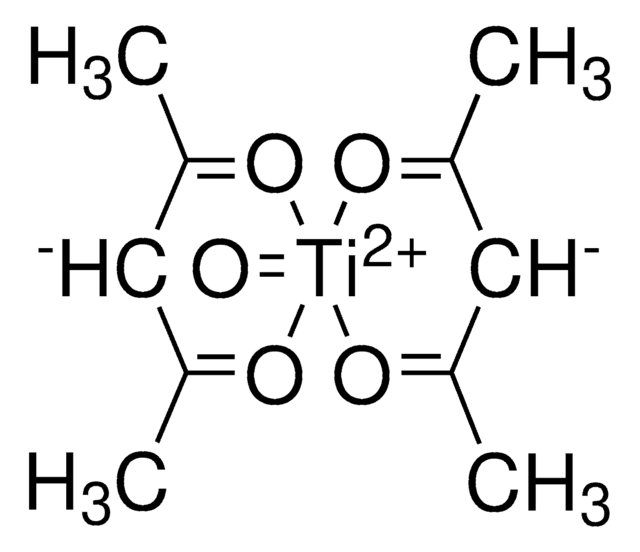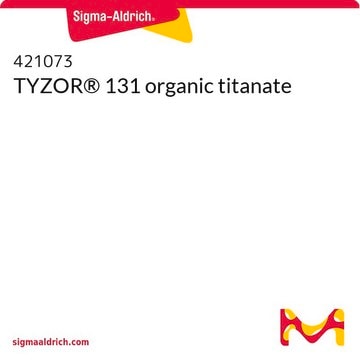333484
Titanium(IV) 2-ethylhexyloxide
95%
Synonym(s):
Tetra(2-ethylhexyl)titanate, Tetrakis(2-ethylhexyl) orthotitanate, TYZOR® TOT organic titanate
About This Item
Recommended Products
Quality Level
Assay
95%
form
liquid
liquid
reaction suitability
core: titanium
reagent type: catalyst
refractive index
n20/D 1.479 (lit.)
bp
248-249 °C/11 mmHg (lit.)
density
0.927 g/mL at 25 °C (lit.)
SMILES string
CCCCC(CC)CO[Ti](OCC(CC)CCCC)(OCC(CC)CCCC)OCC(CC)CCCC
InChI
1S/4C8H17O.Ti/c4*1-3-5-6-8(4-2)7-9;/h4*8H,3-7H2,1-2H3;/q4*-1;+4
InChI key
KTXWGMUMDPYXNN-UHFFFAOYSA-N
Looking for similar products? Visit Product Comparison Guide
Legal Information
Signal Word
Warning
Hazard Statements
Precautionary Statements
Hazard Classifications
Eye Irrit. 2 - Skin Irrit. 2 - STOT SE 3
Target Organs
Respiratory system
Storage Class Code
10 - Combustible liquids
WGK
WGK 2
Flash Point(F)
159.8 °F - closed cup
Flash Point(C)
71 °C - closed cup
Personal Protective Equipment
Certificates of Analysis (COA)
Search for Certificates of Analysis (COA) by entering the products Lot/Batch Number. Lot and Batch Numbers can be found on a product’s label following the words ‘Lot’ or ‘Batch’.
Already Own This Product?
Find documentation for the products that you have recently purchased in the Document Library.
Customers Also Viewed
Articles
Mesoporous materials, such as aerogels, offer advantages for practical hydrogen storage. They have large surface areas, open porosity, small pore sizes, and the ability to coat the surface with one or more compounds.
Mesoporous materials, such as aerogels, offer advantages for practical hydrogen storage. They have large surface areas, open porosity, small pore sizes, and the ability to coat the surface with one or more compounds.
Mesoporous materials, such as aerogels, offer advantages for practical hydrogen storage. They have large surface areas, open porosity, small pore sizes, and the ability to coat the surface with one or more compounds.
Mesoporous materials, such as aerogels, offer advantages for practical hydrogen storage. They have large surface areas, open porosity, small pore sizes, and the ability to coat the surface with one or more compounds.
Our team of scientists has experience in all areas of research including Life Science, Material Science, Chemical Synthesis, Chromatography, Analytical and many others.
Contact Technical Service











